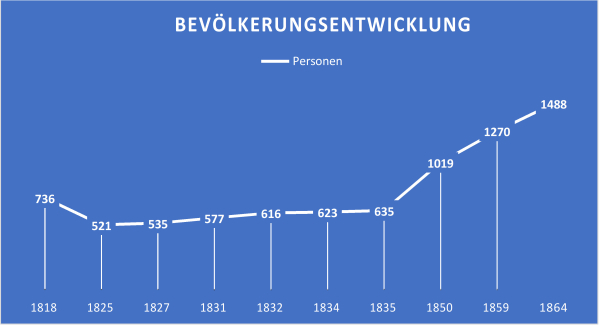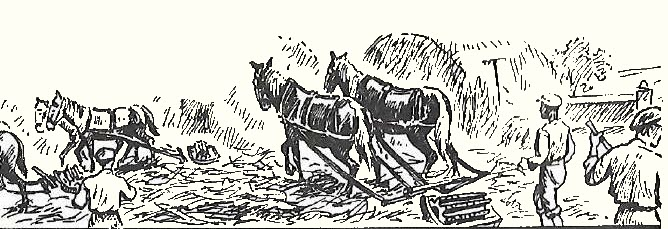_English_
User Tools
Site Tools
Sidebar
Table of Contents
6 Conclusion
With the immigration from the Odessa colonies, the major colonist exchange for Krasna was over. New families still arrived in the village sporadically, but by and large it was the families listed in the 1850 Census that remained permanently in Krasna.
Krasna Bessarabia 1850 Village Census
| Surname | House number |
|---|---|
| ALMAS | 39 |
| ALWINGER | 24 |
| ARLOT | (3-4) |
| ARNOLD | 51,52,120 |
| BACHMEIER | 127,129,143 |
| BALDUS | 73 |
| BARET | (72-73) |
| BAUER | 125 |
| BECKER | 26,101, 123 |
| BOGOLOWSKI | 62,63,94,17 |
| BONJAKOWSKY | 37,58,60,114 |
| BOTH | 31 |
| BRANDT | (89-90) |
| BRAUN | 40, 122, 134 |
| BRICKNER | 91 |
| BRUSCHINSKY | 90 |
| BUKERT | (124-125) |
| CIOZEK | 71 |
| CIOZEK | 92 |
| DAM | (61-62),105 |
| DEICHERT | 3, (114-115) |
| DIRK | 13,25,33, 84,155 |
| DREFS | 137 |
| DRESSLER | 13 |
| DRESSLER | 107 |
| ENGEL | 9 |
| ERKER | (30-31) |
| ERKER | 70 |
| FEIST | 131 |
| FENRICH | 16 |
| FLECKENSTEIN | 46 |
| FLECKENSTEIN | 70 |
| FLECKENSTEIN | 119 |
| FRANK | 157 |
| FURCH | 124 |
| GEDAK | 87 |
| GEORG | 158 |
| GERBER | 144 |
| GÖTZ | 151 |
| GROSS | 106 |
| GROSS | 109 |
| GRUNWALD | (102-103) |
| HAAG | (30-31) |
| HAAG | 64 |
| HAAG | 68 |
| HABRICH | 6 |
| HARABURA | 23 |
| HARSCHE | 32 |
| HARSCHE | (32-33) |
| HARSCHE | 71 |
| HARSCHE | 93 |
| HART | 9 |
| HARTE | (39-40) |
| HARTMANN | 23 |
| HEIDRICH | 14,15 |
| HEIN | 12 |
| HERRMANN | 61,63,(99-100) |
| HERRSCHAFT | 139 |
| HINZ | 43,49,50,103 |
| HITTEL | (0-1)(91-92) |
| IHLI | 136. 142, 152 |
| JAKUSCH | 154 |
| KAGOWSKY | 74 |
| KAHL | 110 |
| KELLER | 140 |
| KELLER | 142 |
| KOCH | 126 |
| KOPP | 66 |
| KOPP | 95 |
| KOPP | 96 |
| KRAFT | (120-121) |
| KRAMS | 45, 7 |
| KRENZEL | 117 |
| KRIEGER | (91-92) |
| KUNZ | 81 |
| KUNZ | 145 |
| KUSS | (62-63) |
| KUSS | 75,76, 77,102 |
| LAUTERBACH | 36 |
| LAUTERBACH | 54,57 |
| LEINZ | 48 |
| LEINZ | 55 |
| LEINZ | 108 |
| LÖB | 4 |
| MAAS | (72-73) |
| MAAS | 112 |
| MADER | 104 |
| MANDERNACHT | 113 |
| MARTE | 121 |
| MATERY | 130 |
| MEER | 100 |
| MENGES | 47 |
| MERSCHBACHER | 111 |
| MERZ | 43 |
| MILBRADT | (30-31) |
| MOHR | (60-61) |
| MOLDENHAUER | 53 |
| MÜLLER | 18,19,21 |
| MÜLLER | (28-29) |
| MÜLLER | 35 |
| MÜLLER | 86 |
| MÜLLER | (96-98) |
| NAGEL | 141 |
| NEUMANN | (100-101) |
| NEUMANN | (117-118), 156 |
| NOLD | 146 |
| NOVAK | (87-88) |
| PAUL | (30-31), 69 |
| PLOTZKY | 28 |
| POLITZKY | 118 |
| RESSLER | 98 |
| RIEHL | 20, 24, 82 |
| RITZ | 80 |
| RÜCKERT | 44 |
| RUSCHEINSKY | 29, 87, 97 |
| RUSCHEINSKY | 116 |
| SCHÄFER | 100 |
| SCHEPP | 78 |
| SCHEPP | (120-121) |
| SCHLICK | 42 |
| SCHMIDT | (114-115) |
| SCHNABEL | (62-63) |
| SCHREIBER | 150 |
| SCHREINER | 8 |
| SCHULKOWSKY | 5 |
| SCHULZ | 34 |
| SCHWALICH | 79 |
| SEIFERT | 38 |
| SÖHN | 10, 11 |
| SPEICHER | 85 |
| SPITZNAGEL | 147 |
| STEIERT | 132, 133, 135 |
| STEIERT | 138, 148 |
| STEINKE | 67 |
| TERNES | (35-36) |
| TERNES | 83, 88 89 |
| TISCHNER | 41 |
| TSCHISCHMAK | 59 |
| VOLK | 128 |
| WAGNER | 30, 65, 100 |
| WAGNER | 115 |
| WAGNER | 159 |
| WEBER | (35-36),62, 153 |
| WEISS | (61-62) |
| WINGENBACH | 27, 56, 99 |
| WINTER | 36 |
| WINTER | 113 |
| WOLF | 149 |
| WUITSCHIK | 22 |
| WUITSCHIK | 78 |
| ZIEBART | 2 |
However, from the 1850s onwards, a problem became noticeable that increasingly led to families moving away: the lack of land, caused by the strong population growth.
Sources:
- 1818
- „Statistische Nachrichten über die im eigentlichen Bessarabien oder Budshak angesiedelten Warschauischen Kolonien“
- 1825
- Deutsche Bauernleistung am Schwarzen Meer: Bevölkerung und Wirtschaft 1825 / bearb. von Hans Rempel Ausgabe 2. Aufl.
- 1827
- „Statistische Beschreibung Bessarabiens und des sogenannten Budshaks“
- 1831
- State Archives of the Odessa Region, Odessa, Fond 383, Inventory 29, File 630 1832 = Staatsarchiv St. Petersburg Fond 383, Inventory 29 Akte 622 Seiten 147,148
- 1834
- State Archives of the Odessa Region, Odessa, Fond 6, Inventory 1, File 3151 1835 = Steuerliste 1835
- 1850
- Census 1850
- 1859
- Prochnow, Johann D. Die deutschen Gemeinden in Bessarabien in ihrem sittlichen und religiösen Zustande: nach Berichten eines Augenzeugen
- 1864
- State Archives of the Odessa Region, Odessa, Fond 6, Inventory 4, File 21 887
After the evangelical settlers moved away to Katzbach in 1825, the number of 114 farms remained constant. Since the land could not be divided, the number of landless inhabitants increased. Initially, each farm had 60 desjatines, and it was not allowed to divide them among descendants. The farm passed as a whole to the youngest son. However, this rule was soon softened, at first under the table, soon with the acquiescence of the authorities, and finally disregarded. But the total amount of land in the community remained the same, with as many as three families living on one farm around 1850.
Therefore, as early as 1852, the Krasna colonists addressed a petition to the authorities, pointing out the increasing problems and asking for additional land.
They argued:
- that the parish of Krasna, as the only Roman Catholic colony in Bessarabia, was surrounded by nothing but Evangelical Lutheran parishes,
- that there are already 37 young men and 35 young women who have reached marriageable age, but are unable to found a family for lack of land,
- that from already existing families and still single young men who do not own land, at least 88 families capable of farming could be formed,
- that there are 114 farms in the colony, but all of them are already occupied by at least one to three families, leaving no land for those living without agriculture.
For the remedy of this emergency situation, no other means is seen than that land is still allocated by the Crown to the Roman Catholic colony, whereupon the families without farms can move, as well as the still single people after marriage.
(Source: Bittschrift an die Behörden mit Bitte um Landzuteilung vom 31. Mai 1852 (Akte Odessa Staatsarchiv 3-729-15387)
Whether and how the authorities reacted to the petition, we do not know. But a document preserved to us dated May 29, 1885 records what land ownership the former Krasna colony had on 07/01/1871 (date of conversion of land into private property) - State Archive of Odessa Region, Odessa; Fond etc. not identified-.
| settler-owner on a farm with fields (crown land) | 114 farms | 395 men |
| settlers without land | 238 men | |
| Settlers without Kronsland, who bought land outside | the district | 4 men |
This shows that in 1871 the number of farms was still 114, shared by 395 men. Very few farms still had the land quantity of 60 dessj. The number of landless people had greatly increased and even the small plots were no longer sufficient for subsistence. Apart from agriculture, there was no possibility of earning a living, except for a few handicrafts that served the agricultural needs, except for the very poorly paid services with the peasants (farmhands and maids). The only way out was to move away from Krasna.
Some founded the daughter colony Emmental, others moved across the Danube to Dobruja or to Siberia and the Caucasus. Finally, there were emigrations to Canada, the USA, Brazil and Argentina. Emigrations actually did not stop until the resettlement in 1940. And so it happens that people with Krasna roots can be found in many places in almost all continents.



